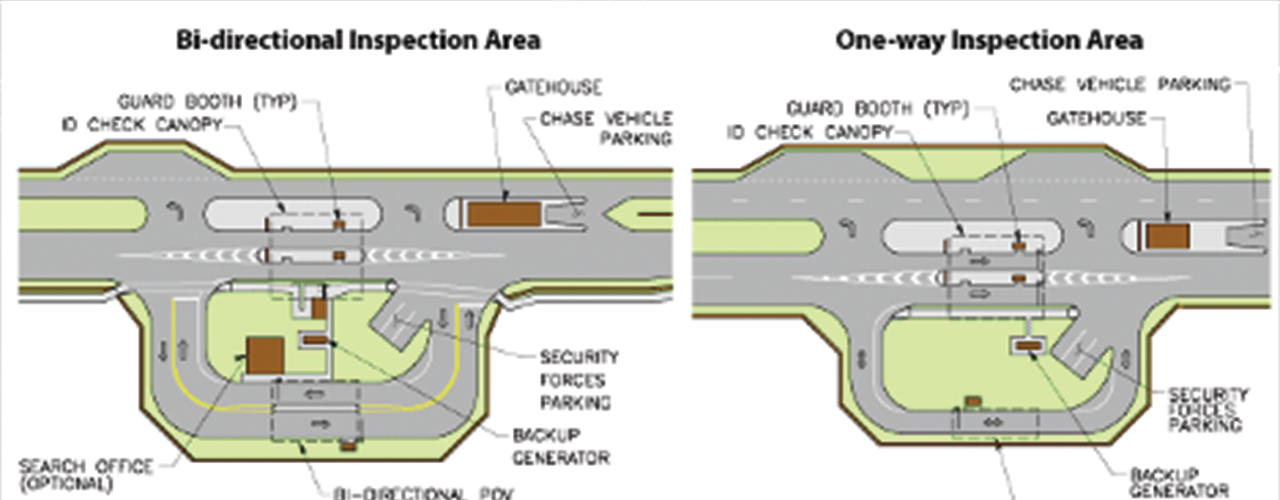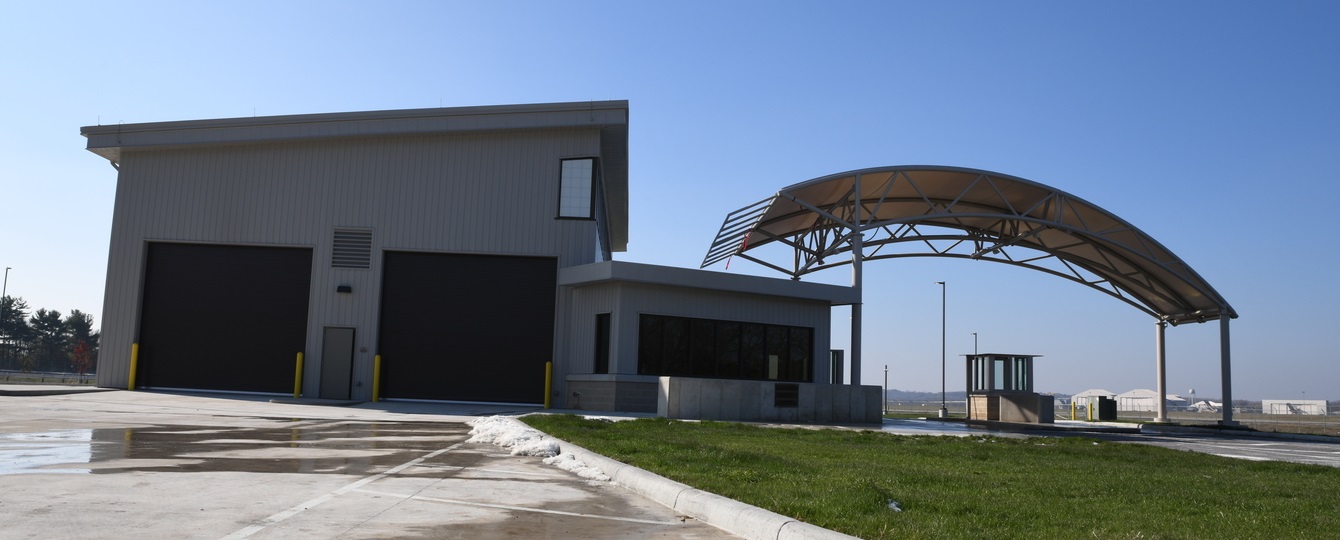
BLOG
—
More than a Gate: Planning Meets Engineering in Federal ECFs
Entry control facilities (ECF) serve a vital role at every military installation. ECFs, sometimes referred to as access control points, encompass the overall layout, organization, infrastructure and facilities at entrance locations onto military installations. ECFs must provide maximum security, accommodate heavy use and high traffic, and adapt to crewed and uncrewed operations while maintaining the appropriate front door of each individual installation.
U.S. military bases around the world face unique challenges concerning ECFs. Many of these challenges stem from hastily built and inadequate facilities installed in the wake of 9/11. Since their installation, the U.S. military has worked to standardize their facilities and ECFs, comply with national roadway standards and coordinate with local jurisdictions. Woolpert has grown into an expert resource for the military in navigating the nuances of these unique facilities.
Over the last few years, Woolpert has provided planning and programming concepts for 18 ECF projects across the U.S., the United Kingdom and Germany. These include the main gate at RAF Mildenhall in England, an ECF at the Germersheim Army Depot in Germany and several ECFs at Joint Base San Antonio (JBSA) in Texas. Drawing on decades of military planning, transportation engineering and architecture experience, Woolpert was selected to conduct assessments, analyze options and make recommendations specific to each installation and each ECF. The team delivered complete and usable concepts and programming documents for the government to secure funding for construction.
Several factors, from sustainability to airfield clearance to lighting, influence planning and design for ECFs and the surrounding road network. By applying roadway design methodologies to concept planning, proofs of concept often can be taken straight to design, complete with accurate cost estimates. We also have found that project stakeholders are vital to this process, and interactive sessions ensure the incorporation of their valued input and preferences while meeting mandated requirements. These stakeholders often include base personnel, security professionals, emergency service providers and the local community.
Gate assessment and design offer the unique opportunity for the fields of planning and engineering to come together to provide a well-thought-out, expertly constructed product to the client. Both disciplines play off each other and fill gaps. While other firms may try to support gate projects from a single direction, Woolpert provides the best micro and macro views from the multiple disciplines involved. Depending on the nature of the project, Woolpert may also involve architects, utility engineers and traffic engineers to ensure that all bases have been covered. The best part? Woolpert provides these services in-house, making coordination virtually seamless. As a result of this multidisciplinary approach, Woolpert’s products are complete and usable—immediately.
Just as each installation is different, each ECF has inherent challenges and opportunities based on location, mission, community and footprint. For example, the RAF Mildenhall main gate was built on newly acquired land outside the installation perimeter and base boundaries. Therefore, it not only had to meet military standards, but had to be compliant with country and regional roadway requirements. For JBSA, plans for six ECF designs evolved into three additional bridge designs to ensure the base had the required security and flexibility.
Whatever route is taken, the end goal remains the same: to create a highly secure, compliant EFC that serves the needs of each installation and promotes the mission of that facility.


Chad Hartley
Woolpert Project Manager Chad Hartley, AICP, LEED AP ND, has over 20 years of experience in military master planning for clients worldwide. His areas of expertise include area development plans, requirements analysis, charrette facilitation, and planning and programming studies at various U.S. Air Force and U.S. Army installations. Chad has worked closely with every Woolpert facility gate project for Woolpert.

Jay Boltz
Woolpert Engineer Team Leader and Senior Associate Jay Boltz oversees Woolpert’s roadway and energy teams. He has been with Woolpert for 12 years. He has a background in urban roadway and streetscape design, ADA compliance, utility relocation and transportation planning, which all lend well to these types of projects. Experienced and licensed in multiple states, Jay is accustomed to dealing with jurisdictional differences based on locale. His responsibilities include working with stakeholders to address specific engineering issues, identifying areas of opportunity for gate enhancement, drafting concepts for improvements and calculating cost estimates.


